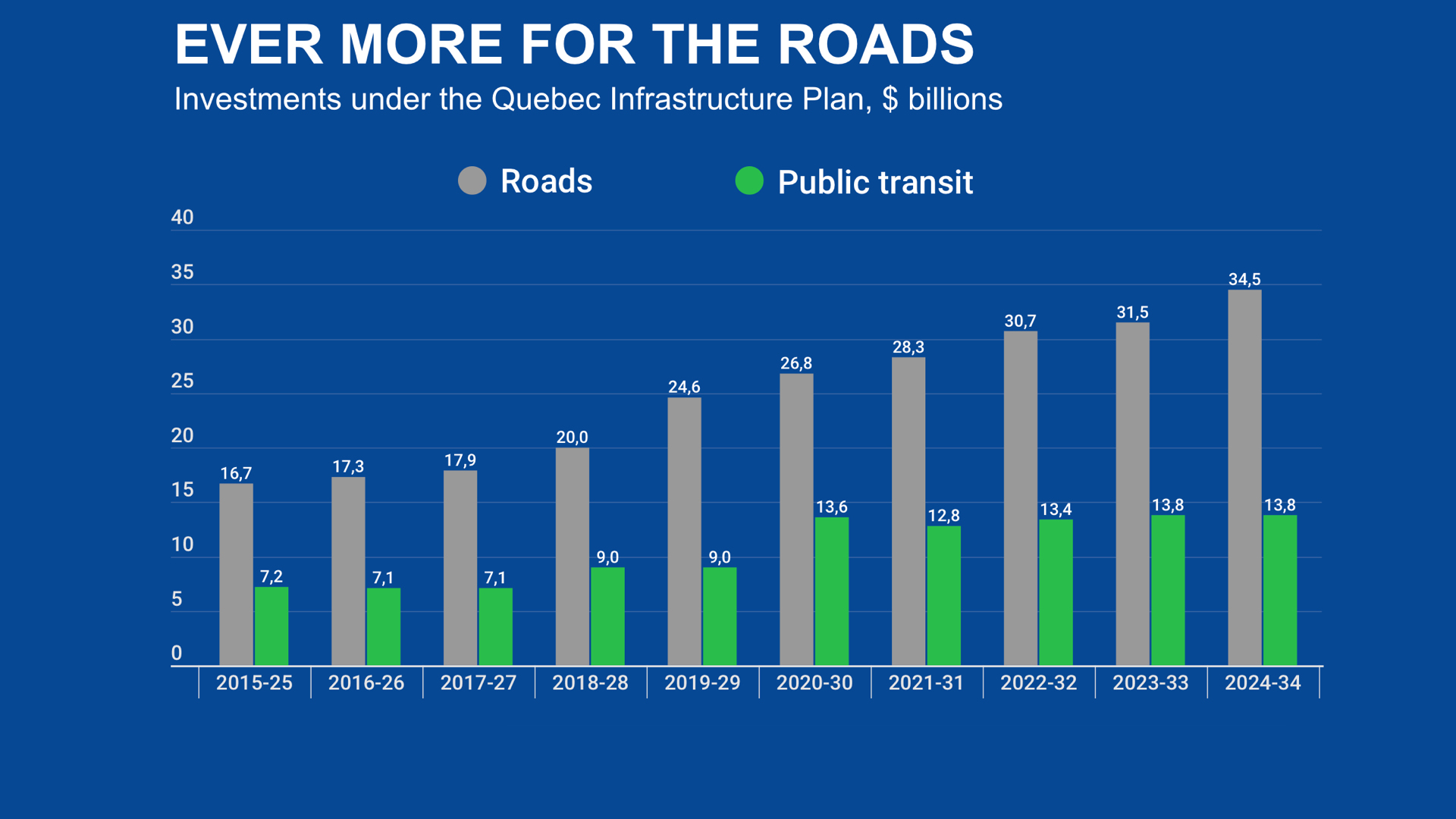
The government is investing $10 billion in an infrastructure “growth plan” as a key element of its COVID economic recovery strategy. To support implementation of this plan, the Canada Infrastructure Bank (CIB) is charged with mobilizing private funds in order to finance projects. The basic problem with the infrastructure bank is that its current structure prevents it from effectively doing so.
Canada has a longstanding infrastructure gap and limited public funds for addressing this gap. As a response, the CIB was established in 2017 with the primary purpose of leveraging private finance. It has failed in two important ways. It has had limited success in generating new projects, and it has not succeeded in mobilizing meaningful private infrastructure financing. It has also been politically vulnerable as an institution and in its project selection.
In addressing the lack of success mobilizing private participation in infrastructure, a key question is whether problems lie primarily in the overall supply of private finance available for infrastructure projects, or whether problems lie more with individual projects. With its developed economy, Canada does not lack access to financing for projects that are well-structured, meaning projects generating returns sufficiently attractive to private investors.
The challenge is creating institutional mechanisms for channeling significant domestic and foreign savings, otherwise invested, to such projects. For example, financial investors and asset managers such as pension funds, insurance companies, mutual funds, sovereign wealth funds, as well as select corporations, constitute significant global savings. Much of this is invested in government bonds and other fixed income securities. This is a largely untapped pool of potential money for infrastructure finance.
The concept of the CIB, with a focus on preparing suitable projects to attract private participation, was sound. More generally, it was intended to address the institutional constraint on private financing by creating an innovative mechanism that prepares projects in such a way that they both serve the public interest and appeal to private investors. This would then enable channeling large pools of long-term savings, mostly parked in low-yielding assets, toward higher-return long-term infrastructure projects that also address key societal needs. In this it has failed, largely because of its organizational design.
The CIB was set up as a Crown corporation, following examples of similar institutions elsewhere. While it is intended to be “arm’s-length” in its operations, the Government of Canada sets “overall policy and high-level investment priorities of the CIB.” This makes it vulnerable to allegations of political interference. More fundamentally, putting private sector representatives on the CIB board or in key management positions, however eminent and qualified, does not necessarily make for an effective organization to mobilize significant private money from institutional investors and asset managers. To achieve this, CIB would need to be more private sector-driven, and market-responsive.
Benefits and challenges of public-private partnership in infrastructure projects
Public investment or public-private partnership (PPP) may be appropriate when a project has substantial economic returns but insufficient financial returns. For example, building a highway that creates significant economic opportunities in a region is a potential candidate for public investment but not necessarily attractive for private finance. For this, it would need to generate sufficiently attractive returns for investors as compared with their other potential investment options. If even part of the highway can be a toll road that generates enough revenues to meet expectations of investors, it may be structured as a PPP to attract private participation. Private financing may then free up scarce public funds for other priority expenditures.
The key challenge in PPPs, and a main task of the CIB, is effective structuring of projects to meet both public and private sector expectations. This involves allocation of risks and responsibilities between governments and private partners over a project’s lifecycle. The more government transfers risks to the private sector, the lower the direct burden on government. But the cost of the project will increase because of higher returns expected by investors.
For example, there is significant risk associated with revenues from toll roads because of user uncertainty, as the underutilized Highway 407 in Ontario demonstrates, with drivers saying it is too expensive to use. Lowering the tolls may increase users, but may not generate sufficient total revenues for investors to allow for adequate returns. The more government transfers such risk to the private partner, the higher is the likely overall cost of the PPP project. Lenders may raise the cost of borrowing for the project, or potential private partners increase their costs in bidding for the toll road concession. If the public sector bears more of the risk by guaranteeing sufficient payment to private investors to make up shortfalls in toll revenues, for example, this potentially reduces to government the value of private participation.

Large-scale infrastructure projects are always a challenge, whether public, private or PPPs. They often involve delays, underestimated costs and overestimated benefits. PPPs add another significant layer of complexity. They usually take a long time to prepare, have higher financing costs than publicly financed projects, and require complex alignment of fundamentally differing public and private interests.
For government, a PPP project is worthwhile if it can address societal needs with better value for the public (“value-for-money”) than traditional government procurement. If well designed and effectively monitored, it may also lead to improved service efficiency and innovation. For private investors, a PPP project will be attractive if it generates sufficient revenues to provide satisfactory returns compared with other investment options.
The challenge with PPPs is to structure projects so they serve both the public interest and meet private investor expectations. This is no doubt well understood by CIB management and staff. The fundamental obstacle to mobilizing significant private financing is not so much the CIB’s operations. It is its organizational design, which also leads to political vulnerability.
More effective Canadian Infrastructure Bank for mobilizing private finance
We believe that CIB should become a private sector-driven and market-responsive institution. This is based on our work in Asia on similar issues and institutions, and from lessons elsewhere. For this, ownership should shift mostly to the private sector. This would likely provide greater confidence in the financial viability of its projects and reduce perceived risks of political interference.
Privatization of the CIB would involve issuing equity and debt securities – special CIB bonds, for example – through the capital markets, facilitated by incentives such as tax credits adjusted to length of investment tenure. Marketing the CIB could target leading financial institutions and corporations to serve as “anchor investors.” These would likely attract other investors by providing a level of confidence in the CIB as an organization. Shareholders would elect directors who then appoint CIB management without political interference.
Operationally, such a CIB would retain as a key role the structuring of projects to be “bankable.” This means the projects would be attractive for private financing based on agreed risk-sharing among project participants, including government in the case of PPPs. Investing in infrastructure through CIB as an organization rather than just through individual projects is also likely to be more attractive to institutional investors such as pension funds by spreading risks over CIB’s portfolio of projects. Furthermore, it could invest the mobilized funds in good projects from external sources, proposed and structured by other private sponsors and/or public enterprises. This would expand available private financing for infrastructure more generally.
Government should participate in the new CIB as a minority investor. This would allow for limited policy input through board presence but without government control or political vulnerability. Government would provide regulatory oversight of the CIB’s operations to ensure they are broadly in the public interest. A successful CIB could also be a source of public revenues, since government as a shareholder would receive dividends and could also benefit from capital gains if share prices increase.
CIB complements but does not replace public investment
It is important to stress that a private sector-driven CIB is not a replacement for public investment in infrastructure. It is a complement to it. Many projects are simply not appropriate for meaningful private participation given low financial returns, even if they have potentially high economic and social benefits.
Their implementation is ultimately a political decision, based on government’s assessment of alternative societal needs guided by well-thought out public priorities. Investing in such projects is a key role of government, with due consideration of macro financial implications to keep overall public debt within acceptable limits.
A private sector and market-driven CIB together with an effective government framework for public investment including for guiding participation in PPPs would provide a strong institutional foundation for addressing Canada’s infrastructure gap. It would allow mobilizing significant private sector resources for project finance, and ensure that such investment ultimately serves the public interest.
Photo: Highway 407 ETR eastbound west of Toronto. Shutterstock.com, by David J. Mitchell








